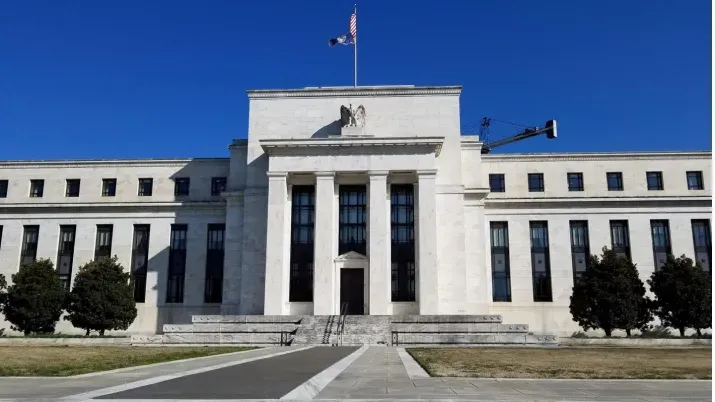Fed preview: Look beyond the size of the cut
Wednesday will be a rather odd Federal Open Market Committee (FOMC) day from a statistical point of view. According to Deutsche Bank research, there hasn’t been this level of uncertainty as to what the Federal Reserve’s decision will be in nearly 15 years. At the time of writing, market pricing puts the size of Wednesday’s widely expected rate cut at around 42bp; investors are leaning more in favour of a 50bp cut than the standard 25bp, but with limited conviction.
In the last few weeks, the short end of the US Treasury curve (which is highly sensitive to short term rate expectations) has been on something of a rollercoaster ride, albeit with a clear downward trend in yield. In that time markets have absorbed a weak labour market report followed by a better one, a somewhat higher US inflation print and a couple of articles from one supposedly well-sourced reporter at the Wall Street Journal suggesting a 50bp cut is definitely on the cards. Our base case is for a 25bp cut given the economy is still on a strong footing, and recent speeches by FOMC members Christopher Waller and John Williams were hardly suggestive of an imminent 50bp cut. That said, we acknowledge the Fed does not seem to like surprising markets. In that sense it is possible the Fed has “used” the Wall Street Journal to manage market expectations, given the implied size of the cut stood at just 26bp before the articles were published.
While the majority of headlines have concerned whether the Fed will do 25bp or 50bp to kick off its cutting cycle, we think this is only one part of the discussion – and not necessarily the most important one.
The Fed and other central banks have a wide array of tools at their disposal to achieve their mandates and steer the economy in line with their macro views. There are numerous combinations of rate cut size, dot plots, macro projections and rhetoric at press conferences that can achieve similar objectives. Beyond the very short-term volatility just after the rate announcement, the focus for investors will be on untangling the Fed’s assessment of the economy.
We think the Fed’s assessment of the US economy currently is that it is actually in decent shape. In that sense, if it delivered a 50bp cut (again, not our base case) we wouldn’t expect the market narrative to be that the Fed is panicking. The press conference message would probably be that the Fed Funds rate is just too restrictive at 5.25%-5.50% given the labour market is cooling off and inflation continues to move towards target, and even a 50bp cut would still leave rates in restrictive territory. This would be a similar message to the one we got from the European Central Bank and Bank of England as they began their respective cutting cycles earlier this year. In order to preserve a healthy unemployment rate in the low-to-mid 4% area, it is reasonable for the Fed to “front load” rate cuts and guide to smaller moves at future meetings.
Similarly, we doubt a 25bp would be seen as the Fed being behind the curve. In that scenario the tone of the press conference would likely be focused on the Fed’s ability and willingness to cut by 50bp in the future if needed, and that the central bank foresees several cuts in the not-so-distant future under its base case scenario. This would likely be emphasised in the new Summary of Economic Projections (SEP), which in June projected an unemployment rate of 4-4.1% (in the Central Tendency) for 2024, with a range of 3.9%-4.2% in 2025. We expect the new SEP will include a mildly higher unemployment rate projection. As a result, we should see a considerable move downwards in the FOMC’s dot plots for both 2024 and 2025 supporting the view that the Fed is not behind the curve, though they need to “sell” this to the market. We do believe the dot plots are less important when the Fed is 100% data dependent. Logically, the Fed is saying the dot plots will move with the data. Given Fed chair Jerome Powell’s words at Jackson Hole in August, we think the labour market’s future evolution and the Fed’s projections for unemployment are more important.
One final thing to consider is the enigmatic topic of quantitative tightening (QT). With a 25bp cut the Fed’s QT programme should continue progressing. Even with a 50bp cut, if the rhetoric suggests this is a return to normalisation, then that is consistent with QT continuing rather than any serious concern about a downturn. Any discussion of QT in the press conference could thus be another window into the thoughts of Powell and other FOMC members as regards the state of the economy.
Excluding the very short end of the curve, government bonds and risk assets might react in a similar fashion to either a 25bp or 50bp cut, if the combination of cut size and tone portrays a similar picture of the economy. The key message for medium term investors goes beyond the size of the cut on Wednesday, or indeed at any other specific meeting. The message is that the economy is responding in a reasonable manner to the Fed’s past actions, and a loosening labour market along with encouraging inflation trends has given it the green light to start cutting rates, albeit perhaps at a slower pace than in previous cutting cycles given the lack of an imminent recession in the horizon.
We would note, however, that the economy could evolve in such a way that 150bp worth of relatively rapid cuts is possible. Importantly, at this stage we’d deem this scenario to be consistent with a “goldilocks” scenario where inflation continues to behave and growth remains below potential but far from recessionary territory, allowing the Fed to conclude there is no point in staying too restrictive.
Ultimately we think the Fed’s stance will be a positive one for fixed income markets, both for government bonds and spread products. Government bonds should be supported by the gravity pull of the short end going lower as rates are cut, while spreads have every reason to be below their long-term averages if the economy does not come near to a recession.




